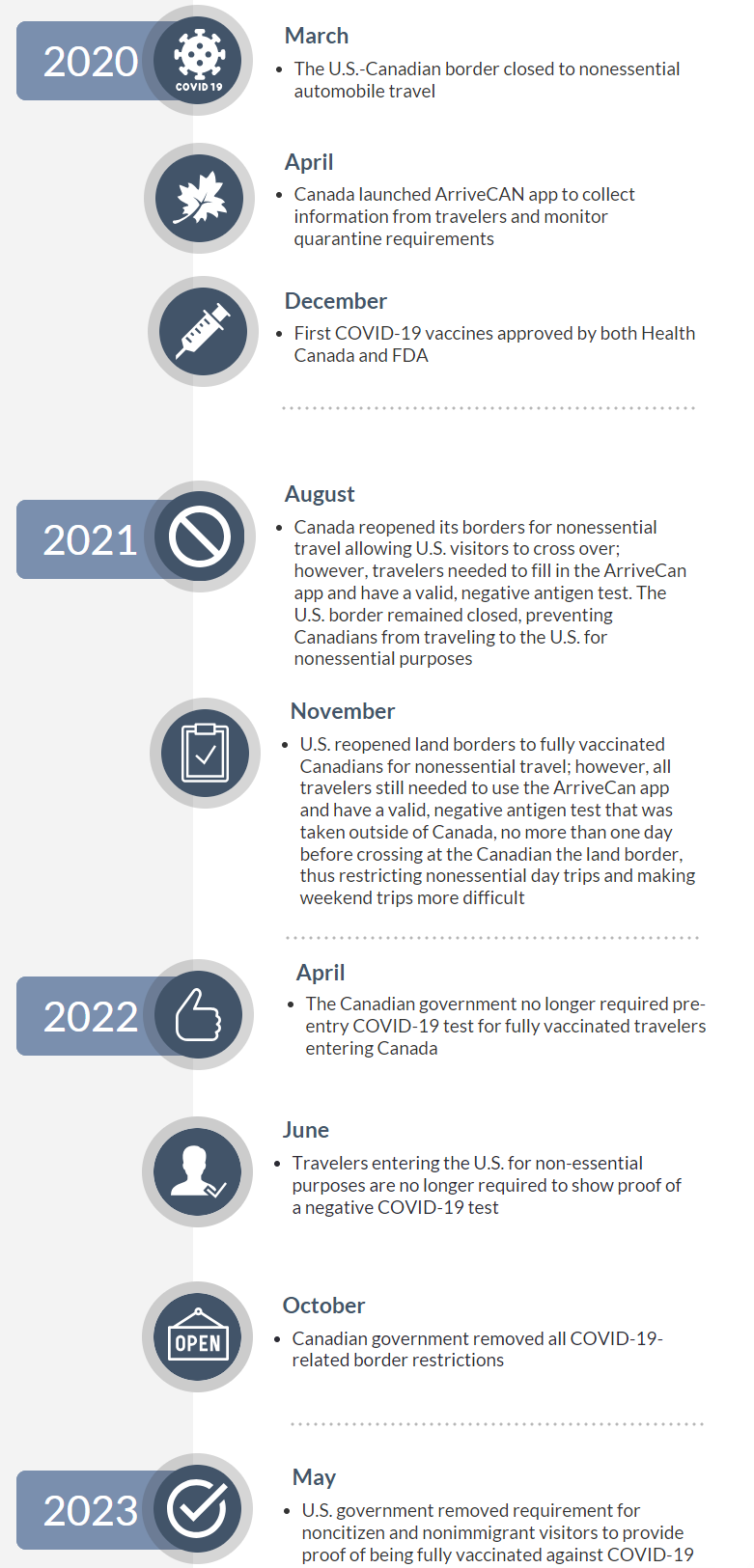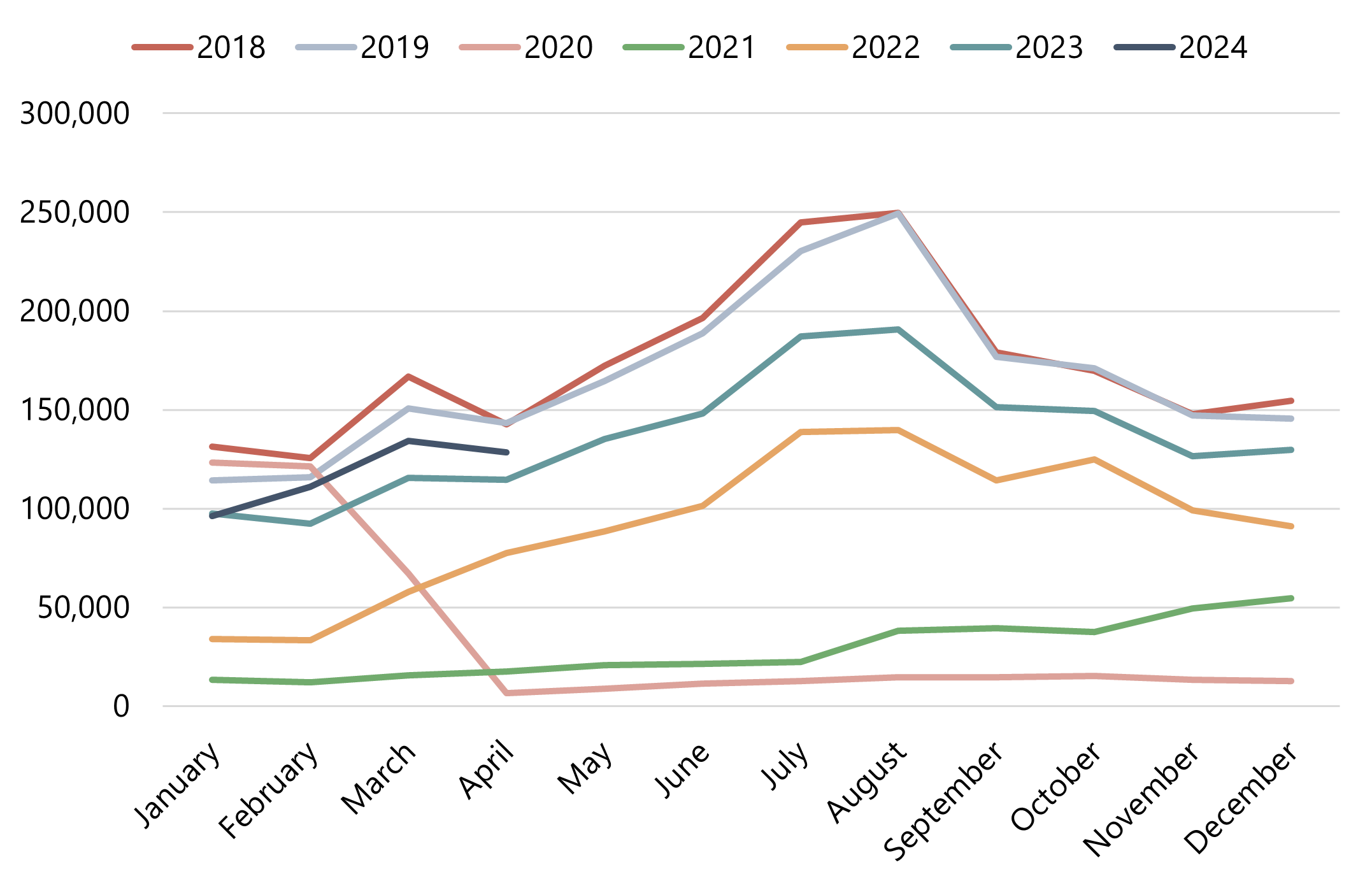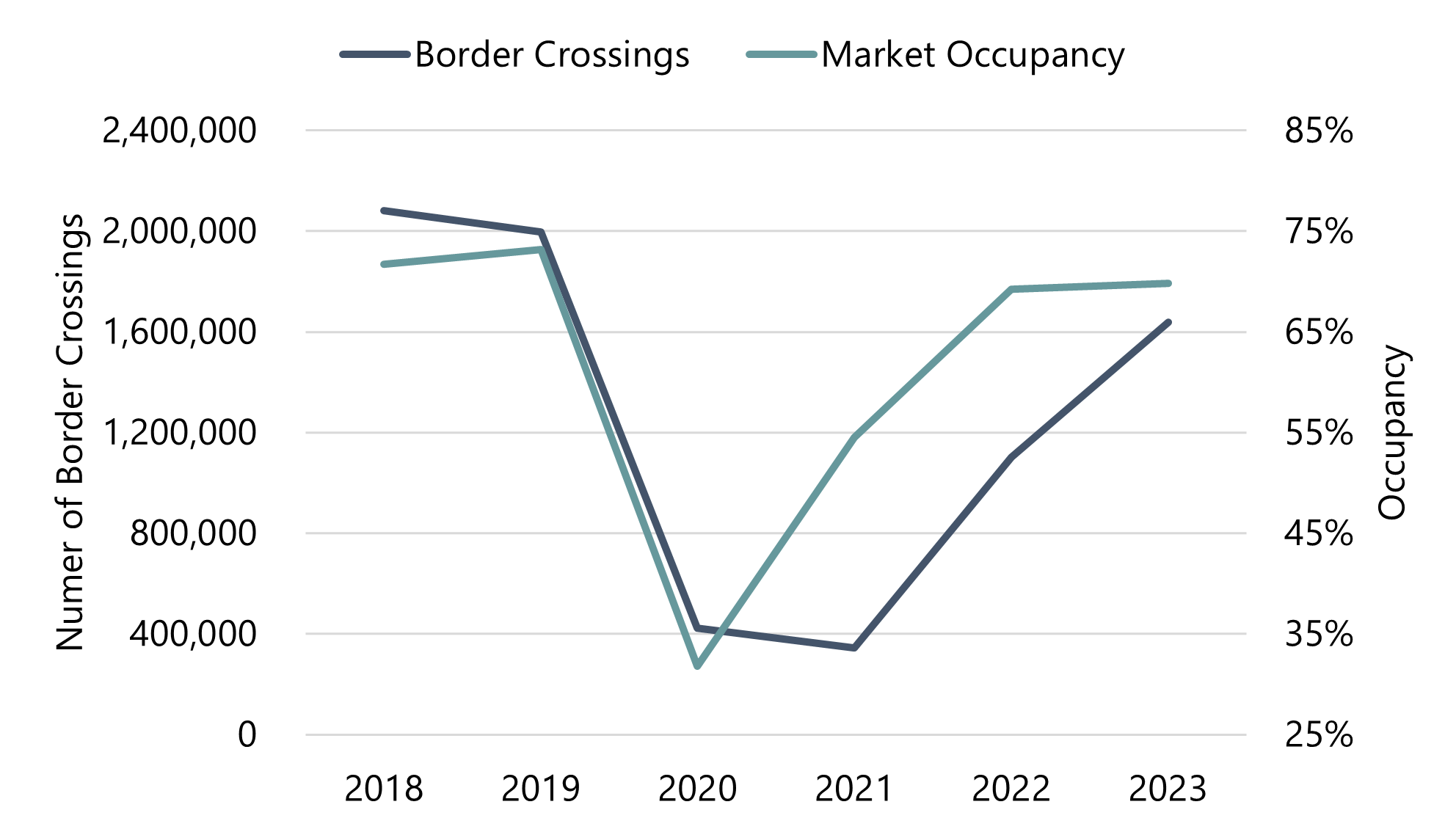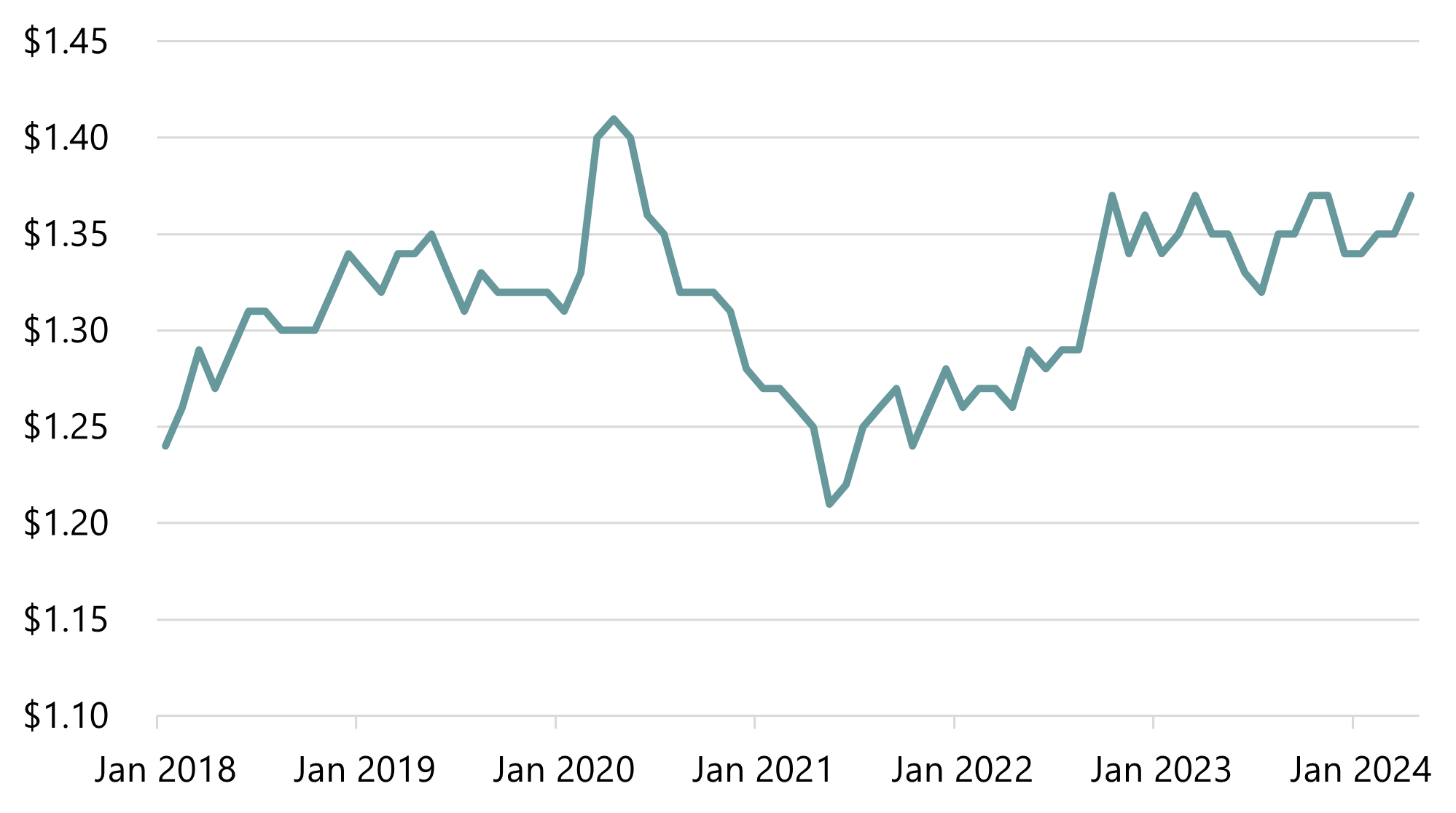As a border town, Buffalo has historically been heavily reliant on Canadian visitors and U.S. travelers stopping over en route to/from Canada for lodging demand. Based on a recent hotel market study and many hotel appraisals in the greater Buffalo-Niagara area I have performed, it is clear that traffic volume at the land crossings has an impact on these border markets. Below is a brief timeline of the changing restrictions for border crossings from 2020 until 2023.
Key Dates for Border-Crossing Restrictions
As the one-year anniversary recently passed since all COVID-19 border restrictions were lifted, I wanted to take a look at the correlation between the key metrics for the Buffalo lodging market and crossings data at the Peace Bridge, an international land border that connects Buffalo to Fort Erie in Ontario, Canada.
Peace Bridge Border Crossings by Month
* Crossings reflect automobiles entering the U.S. from Canada (excludes trucks and crossings in dedicated commercial lanes)
Source: Buffalo and Fort Erie Public Bridge Authority
Peace Bridge Border Crossings Compared with Market Occupancy
Note: occupancy levels do not include all hotels in the market but comprise a representative sample
Source: STR, Buffalo and Fort Erie Public Bridge Authority
As illustrated above, the depth and duration of the impact of the COVID-19 pandemic affected the two metrics slightly differently based on the nature and extent of restrictions on businesses and the restrictions placed on border crossings. With the availability of vaccines and lifting of many business restrictions, occupancy generally improved in 2021, although the Omicron variant slowed the recovery in the latter part of the year. However, international border crossings declined in 2021 as the border remained closed for all nonessential travel for much of the year and then reopened with heavy restrictions in place. With border restrictions fully lifted in early 2023, both international crossings into Buffalo and occupancy levels spiked.
Photo Credit: Larry Mathewson (Published with Permission)
We note that 2024 will be the first year since 2019 where COVID-19-related border restrictions will not play a role in the local border crossings or the occupancy of Buffalo hotels. Neither metric has fully recovered to pre-pandemic levels, largely due to a third variable that plays a significant role in both: exchange rates. Buffalo is a convenient stopover destination for Canadian travelers heading south for vacation, and the duty-free exemptions in the U.S. have historically made shopping in New York an attractive weekend getaway for Canadians; however, these trips are more appealing when the U.S. dollar is not quite as strong, as was the case in 2018. While exchange rates were also lower in 2021, the Buffalo market did not see the typical benefits given the aforementioned border restrictions.
Historical USD to CAD Exchange Rate—January 2018 through April 2024
Source: Federal Reserve Board
Final Thoughts
The Buffalo lodging market has historically benefited from notable demand created by Canadian travelers, and this demand source will continue to play an important role going forward. While occupancy levels have not fully recovered from the negative impact of the COVID-19 pandemic and related border restrictions, double-digit annual rate growth allowed market RevPAR to exceed pre-pandemic levels in 2022 and significantly outpace those levels in 2023. Data for 2024 illustrate a continued upward trend, bolstered by the impact of the solar eclipse, during which Downtown Buffalo was in the path of totality for 3 minutes and 45 seconds.
Our positioning within local markets empowers us to conduct primary interviews with key market participants. This approach ensures we obtain real-time insights and current data for each market we operate in. For more information about the Buffalo market or for help making informed investment decisions that align with your goals and risk tolerance, please contact Christian Cross, your local HVS Upstate New York hospitality expert.






